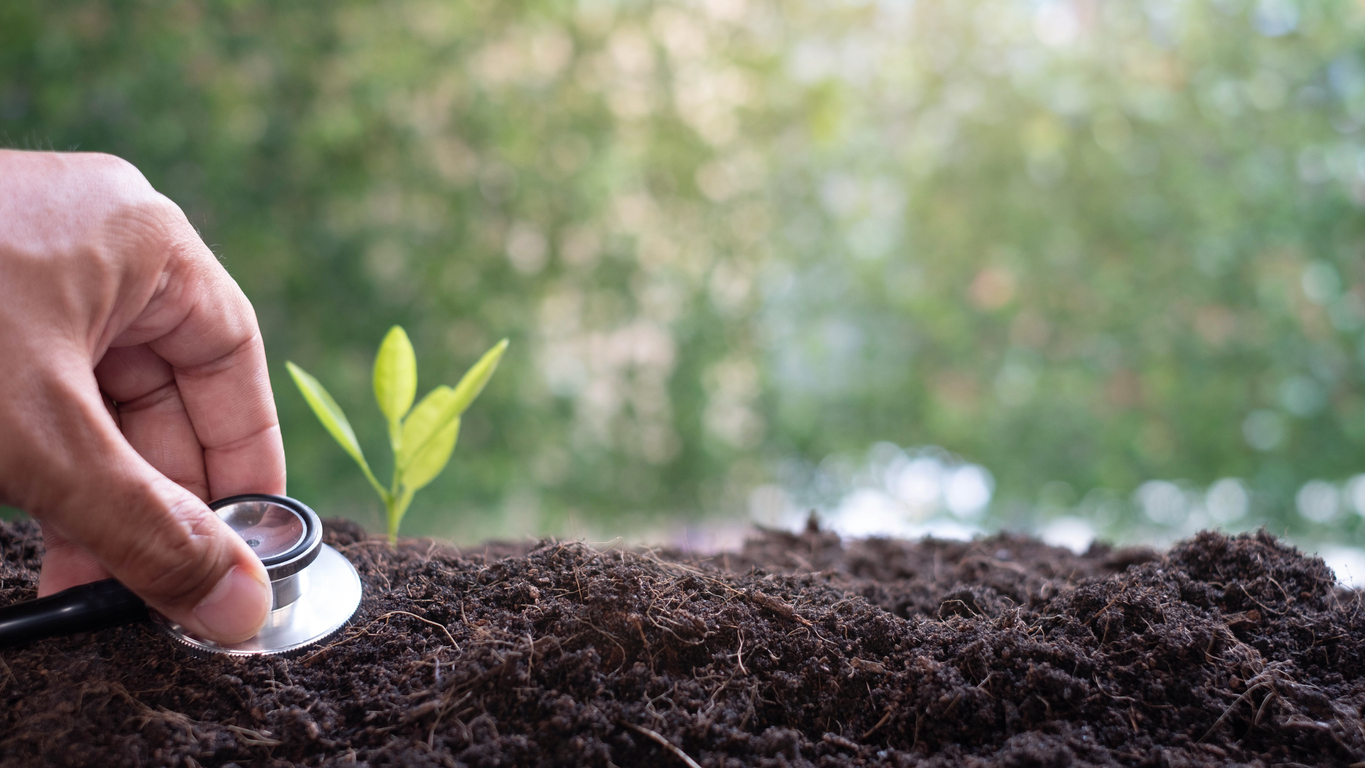Monitoring Plant Health
Farmers are often looking for a quick way to measure plant health. Soil and tissue tests are commonly used, but the results may take several days or even weeks in some cases. This can be too late on a growing crop. A quick and easy method to evaluate plant health is to measure a plant’s sap pH which gives instant feedback.
A plant’s sap pH represents the percentage of hydrogen ions in a solution or the liquid (sap) from the plant cell. The pH ranges from 1 which is highly acid to 14 which highly alkaline. Since pH is a logarithm, a one pH unit change equals a tenfold change in the hydrogen ion concentration. If the pH is increased or decreased by two units, the hydrogen ion concentration changes by a hundredfold! A slight shift in plant sap pH can lead to disaster for the farmer.
The plant’s sap pH indicates several things. Plants and humans are biological beings. Enzymes and carbohydrates (sugars) break down and are being utilized for growth and everyday living. The pH of a plant’s sap or human blood can indicate how healthy you or the plant are at a given point in time. For plants, the risk potential for insect or disease damage increases when the pH is outside the ideal range. Generally, this can be attributed to nutritional deficiency or surpluses. A plant sap pH of 6.4 is ideal, with very little chance of insect attack. If a plant sap pH changes to either 6.0 or 7.0, this increases the chance of insect attack to 60%. A plant sap pH of either 5.0 or 7.5 changes the probability to a 90% chance that insects and or disease will attack your plant.
Often both insect and disease problems occur at the same time. When insects attack due to a high plant tissue pH, the plant tissue weakens where the insect attack occurs. Insects can sense nutrient status in the plant by measuring the electrical frequency. An electrical frequency between 7.5 and 32 Hertz is considered a “healthy” frequency ranges of all living cells. When insects attack a plant, it causes a rapid energy loss (a drop in pH), often resulting in disease occurring on these weaken areas on the plant.
When a pH shift of a half point (0.5) or more from the ideal 6.4 occurs in the cellular liquid, a laboratory tissue test should be taken to determine the exact imbalance and which materials should be applied. A low plant sap pH often indicates that calcium, magnesium, potassium or sodium is in short supply. A high plant sap pH indicates that nitrogen, phosphorus or sulfur is in short supply. The same overall process occurs in animal and human cells and this is a good indication of overall health for both plants and mammals.
A plant’s sap pH can also indicate nutrient quality in the grain, fresh fruit or vegetable crop to be harvested. The best tasting food comes from healthy plants that have higher levels of nutrients which is called nutrient density. Nutrient dense foods have a longer storage or shelf life and can resist rotting or decaying for longer periods of time.
To monitor plant health, sample the mature leaves on the plant to get the most accurate picture of the plant’s health, level of resistance or susceptibility to problems. Since the plant spends most of its energy supporting new growth, the pH of new leaves will not reflect the pH of the rest of the plant as a whole. A simple pH meter, like a Cardy Twin drop pH test (Horba) can give you an instant reading, in less than one minute. Take a few mature leaves, roll them up into a tight ball, and squeeze out a few drops of sap using a garlic press. For a quick adjustment to bring up the pH, calcium can be foliar applied in small amounts per acre. To bring the pH down, phosphates can be applied, but the results are only temporary until more extensive lab tests can be performed to give long term solutions. Usually this is only done on high value vegetable crops.
Plant tissue or sap pH management is a relatively small but invaluable investment of your time, which can help prevent disease or insect attacks. This means higher yields, bigger profits and better use of fertilizer. It can also save the farmer money on applying expensive pesticides like insecticides or fungicides if you can keep your plant healthy and free of insects and disease. Adapted from an article by John Kemp.
